This article is the fourth in the Re: Teaching & Learning series of articles that explains the staff professional development programme and how this programme is having an impact on the development of the boys at the College.

The teaching and learning environment at John McGlashan College is designed to prepare our students for the diverse challenges and opportunities in this ever-changing world. The following “Vision for Teaching and Learning” statement was developed by the Learning committee, recently:
Personalised learning
To enhance opportunities for personalised learning by harnessing a range of resources and by utilising accessibility features which respond to individual learner need.
Global connectivity
To create experiences for students to collaborate in local, national and global contexts, to encourage active problem solving using authentic and current international issues.
Technical skills
To establish an environment which develops the students into confident users of a range of digital technologies.
Media fluency
To develop information processing skills that ensure students are critical and evaluative in their approach to research and information gathering.
Creativity
To nurture creativity across all curriculum areas by encouraging students to create and share content and to engage in open-ended or project based learning.
Each of our PLC and curriculum groups are very mindful of the above vision for teaching and learning at the College. Any decisions that arise out of the PLC groups are filtered through this vision in a way that maintains the focus upon developing the students of the College. The teaching staff are committed to develop their students to exhibit well rounded learning competencies and gain solid content knowledge, with deep conceptual understanding in a range of meaningful contexts.
Learning competencies are essentially the skills that the learner needs to have to learn. The New Zealand Curriculum lists these and has called them key competencies: thinking, relating to others, using language, symbols and text, managing self, and participating and contributing. The International Baccalaureate Organisation calls their competencies; learning skills: thinking, social, communication, self management, and research. Regardless of the organisation and individual names, the underlying need is to ensure that 21st century learning skills are developed.
Two dimensional learning focuses on content facts and skills only. Three dimensional learning focuses on content facts, skills and concepts related to content knowledge and understanding. Adding conceptual understanding deepens the learning of content and allows the learner to see connections to other subject areas.
Using a range of age appropriate contexts, increases engagement in the content and makes it relevant to the learner. The staff at the College routinely provide contextual learning and assessment.
The students of the College are experiencing the positive outcomes from the re:focus on teaching and learning.

 Open Event Registration - Interested in enrolling?
Open Event Registration - Interested in enrolling? Employment opportunities - click if you're interested in working at McGlashan.
Employment opportunities - click if you're interested in working at McGlashan.